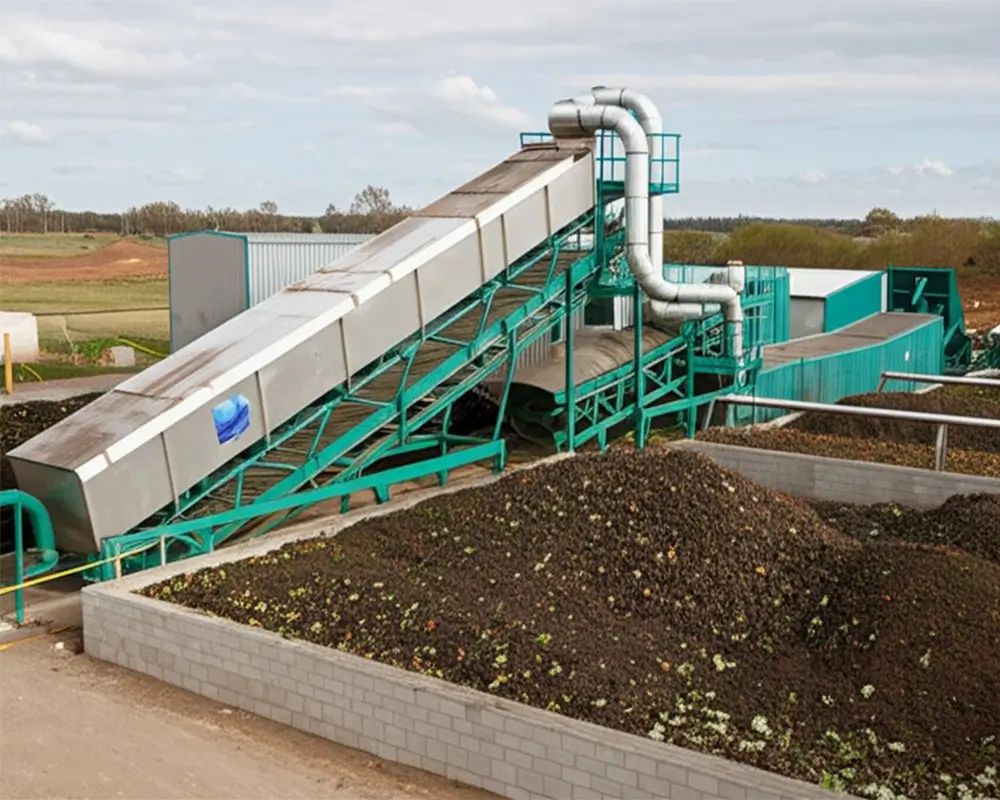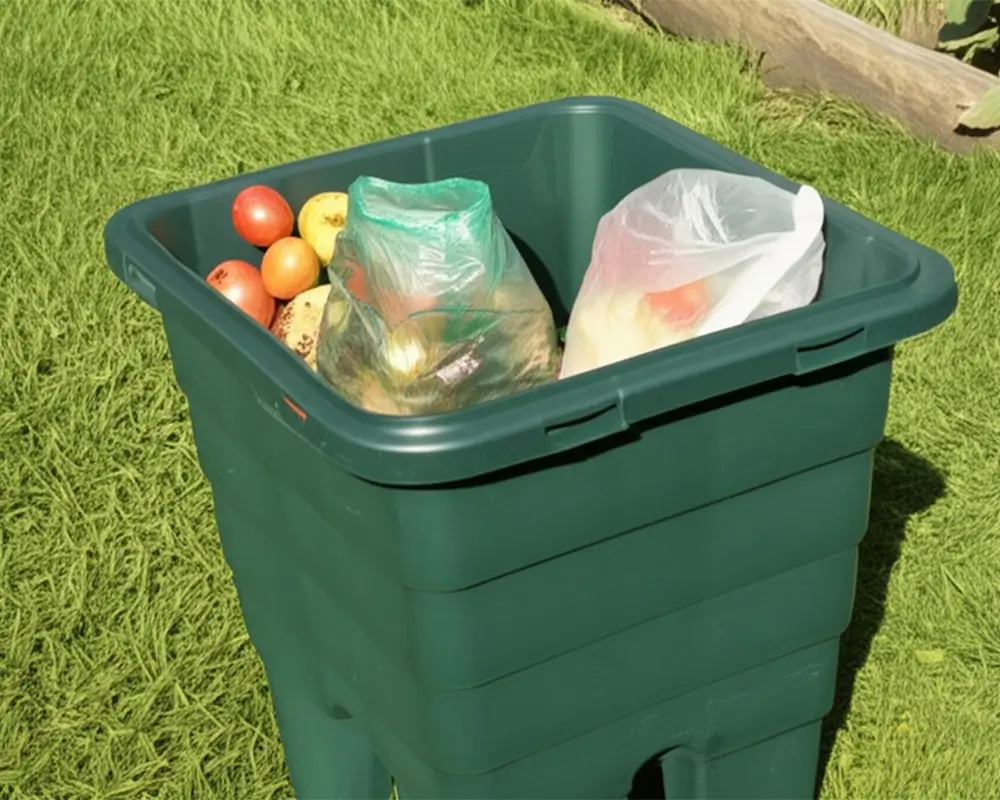Introduction
Did you know that trillions of plastic bags end up in landfills every year? As the global plastic crisis escalates, consumers and businesses alike are turning to eco-conscious alternatives. Among these, compostable bags have emerged as a promising solution to curb plastic pollution. But a critical question remains: How long does it actually take for compostable bags to decompose?
This article delves into the science behind compostable bags, examining the factors that influence their decomposition time. We’ll also provide actionable insights to maximize composting efficiency and clarify industry standards like EN 13432 and ASTM D6400—the benchmarks for authentic compostability.
Why Compostable Bags Break Down?
“Compostable” is definitely not the same as “biodegradable”. Biodegradable bags just mean that they can degrade eventually under the right conditions (like soil or water environment), often leaving microplastis behind. In contrast, compostable means that the bag will break down into natural elements within a reasonable timeframe, in a composting environment, leaving behind non-toxic residue.
Compostable Bags Materials
- PLA (Polylactic Acid): Often derived from cornstarch or sugarcane, PLA is a popular choice for its renewable sourcing.
- PBAT (Polybutylene Adipate Terephthalate): A biodegradable plastic polymer, often blended with PLA to improve flexibility and strength.
- Cellulose: Made from plant fibers, such as wood pulp or cotton.
These materials are designed to be metabolized by microorganisms, unlike traditional plastics that persist for centuries.
Decomposition Process: How Does Composting Work?
Composting isn’t just about collecting and pilling up organic waste. It requires a precise interplay of four elements:
- Microbial Activity: Microorganisms, like bacteria and fungi, colonize the material, converting it into humus.
- Hydrolysis: Water helps break down the chemical bonds in the compostable plastic bags. Think of it as softening up the material for the microbes to feast on.
- Carbon Dioxide Evolution: In an oxygen-rich environment, microorganisms degrade the materials, converting them into carbon dioxide (CO2), water, and biomass.
- Thermophilic Conditions: Industrial facilities maintain heat (55–70°C) to accelerate breakdown.
The Compostable Certifications
Want to be sure your compost bags are truly compostable? Look for certifications like EN 13432 or ASTM D6400. These standards ensure that the bags meet specific criteria for biodegradability, disintegration, and eco-toxicity.
- Disintegrate by ≥90% within 90 days in industrial composters.
- Leave no toxic residues.
- Support plant growth post-decomposition.
Key Factors Affecting Compostable Bags Decomposition Time
While compostable bags offer environmental benefits, their breakdown efficiency depends on several variables.
The Composting Environment
Where you compost your bags makes a huge difference:
- Industrial Composting: These industrial composting facilities are designed to create the suitable conditions for rapid decomposition: high temperatures (around 131-158°F or 55-70°C), controlled moisture levels, optimal aeration, and a diverse microbial community.

- Home Composting: Home composting is a more relaxed affair. Temperatures are generally lower, moisture levels can fluctuate, and the microbial community may not be as diverse. This means the process will likely take longer.
- Burying Bags: Just burying compostable bags in the ground is not going to work well. The lack of oxygen and controlled conditions means it will take much longer to decompose, if it decomposes at all.
Bag Composition
- Thickness: Bags with greater thickness contain more material for decomposition; therefore, they will naturally require a longer period to fully degrade.
- Material Blend: The specific combination of materials used in the bag can affect the overall decomposition rate. PLA and PBAT blends are made for faster breakdown.
- Additive Alert: Some compostable bags may contain additives for coloring or to enhance certain properties. These additives may hinder the microbial activity and slow down the decomposition process. So it’s important to look into what’s actually in the bag.
The Content in the Bag
The types of element you put in the bag can affect the decomposition rate. Food scraps generally speed up the process.
External Factors
There are several external factors that may affect the rate of decomposition.
- Temperature: In warm environments, bacteria and fungi proliferate significantly, accelerating decomposition processes.
- Moisture: Microorganisms require moisture to function effectively. Too little moisture slows down the process, while too much can create anaerobic conditions, leading to unpleasant odors and slower decomposition. 40-60% humidity is ideal.
- Aeration: Adequate aeration is essential for aerobic decomposition. Turning the compost pile regularly ensures sufficient oxygen supply for the microorganisms.
How Long Does It Take for Compost Bags to Decompose?
Industrial Composting
In a well-managed industrial composting facility, things move relatively quickly. EN 13432 and ASTM D6400 standard requires that compostable bags disintegrate by at least 90% within 90 days in a controlled composting environment. While the standards specify 90 days, you might see bags decompose even faster in some facilities, depending on the specific conditions. Expect a general range of 45-90 days.
Home Composting
Decomposition times in home compost bins can vary widely depending on factors like heat, moisture levels and the types of composting waste. Home compostable bags typical take 6 months to 1 year or longer to fully decompose.

If possible, try to observe the decomposition process firsthand. Take photos or videos of your waste bags at different stages to track their progress.
Non-Ideal Conditions
- Landfill: Landfills lack the oxygen and microbial activity needed for proper decomposition. Compost bags in a landfill will essentially be entombed, taking just as long as any regular plastic bags.
- Ocean: Compostable bags are not a solution to ocean plastic pollution. They will not break down quickly in the ocean and can still pose a threat to marine life. Never litter, and always dispose of bags properly.
Storage Tips for Compostable Packaging Bags
That improper storage can degrade the compostable material before it even reaches the compost bin.
Key Recommendations:
- Store bags in a cool, dry environment away from direct sunlight and heat.
- Keep bags away from sources of moisture, as this can trigger premature decomposition.
- Check the packaging for any shelf life limitations and try to use the bags within the recommended timeframe.
- Store bags in their original packaging to protect them from the elements.
- Store in a place with proper ventilation to reduce moisture.
Conclusion
Compostable bags are a promise solution to reduce plastic waste, so it’s important to understand the science behind them and how to storage them properly. Remember:
- Choose certified compostable bags to ensure they meet recognized standards.
- Compost properly, either in an industrial facility or a well-managed home compost bin.
- Store your bags correctly to prevent premature decomposition.
- Share the information with others to help spread awareness.
By embracing compostable packaging bags and following these guidelines, we can all contribute to a more sustainable future. It’s not a perfect solution, but it’s a step in the right direction.
FAQs
Q: Can I compost meat and dairy in compostable bags?
A: Check with your local composting facility. Some accept meat and dairy, while others don’t.
Q: Can home compost systems handle compostable plastic bags?
A: Only bags labeled “home compostable” are suitable. Industrial compostable bags require higher temperatures to disposal of.
Q: Do compostable bags harm marine ecosystems?
A: While safer than traditional plastics, they’re not marine-degradable. Proper disposal remains critical.
Q: What if I don’t have access to a composting facility?
A: Advocate for your community to establish or expand composting programs.